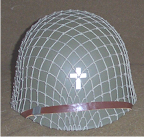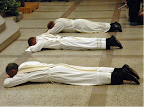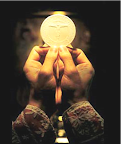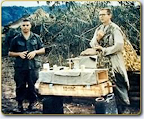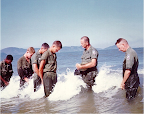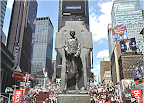2020 Frontpage
_MB13255Edit-X2.jpg
https://awddistrict.org/images/ColorCorps/_MB13255Edit-X2.jpg
AWD2019SuprConv1.jpg
https://awddistrict.org/images/ColorCorps/AWD2019SuprConv1.jpg
_MB13315Edit-X2.jpg
https://awddistrict.org/images/ColorCorps/_MB13315Edit-X2.jpg
VSM_Mike_Thumm_presenting_Supreme_Wreath_101419.jpg
https://awddistrict.org/images/ColorCorps/VSM_Mike_Thumm_presenting_Supreme_Wreath_101419.jpg
MB2_0793Edit-X2.jpg
https://awddistrict.org/images/ColorCorps/MB2_0793Edit-X2.jpg
AWD2019SuprConv2.jpg
https://awddistrict.org/images/ColorCorps/AWD2019SuprConv2.jpg
MB2_0771Edit-X2.jpg
https://awddistrict.org/images/ColorCorps/MB2_0771Edit-X2.jpg
MB2_0578Edit-X2.jpg
https://awddistrict.org/images/ColorCorps/MB2_0578Edit-X2.jpg
Color_Corps_formed_up_101419-1.jpg
https://awddistrict.org/images/ColorCorps/Color_Corps_formed_up_101419-1.jpg
AWD Calendar
Sat, 10:00am - 12:30pm
AWD District Meeting
Sat, 10:00am - 12:30pm
AWD District Meeting
Sat, 10:00am - 12:30pm
AWD District Meeting
Sat, 10:00am - 12:30pm
AWD District Meeting
Sat, 10:00am - 12:30pm
AWD District Meeting
Catholic Military Chaplains
Catholic Military Chaplains - Modern Day Knights
There are many brave individuals, especially in battle. There are many brave chaplains of all Faiths. What was it that prompted only Catholic chaplains to perform such extraordinary deeds that they would receive the nation’s highest award for valor?
There was nothing unusual in the backgrounds of these five chaplains to foretell their actions. They were common men, raised in much the same way as their peers. Some were athletic, others were not. Some were intellectual, others were pragmatic. Some came from large families, others small. Some were raised in working class environments, others were more privileged.
Like all chaplains, they did the routine duties of their branch. In times of peace, they listened to gripes, served as a bridge between the men and their officers on missions of reconciliation, arranged coffee breaks, movies and entertainment to keep up the moral of the young troops, and served as psychologist and parent-in-absentia to the men. They said Mass, heard confessions, and generally ministered to the men and their families. In battle, all chaplains pray with and for those about to go into the fray, soothe the wounded, and minister to the dying. Yet, when circumstances demanded extraordinary deeds, only Catholic chaplains went well beyond the norm.
I believe there are two elements unique to the Catholic priest that account for this. First is the Eucharist. Other religions may profess to have the Word of God as recorded in the Bible, the Torah, the Koran, or the Book of Mormon, but none has the true presence of Our Lord on earth. Only the Catholic priest can transform bread and wine at Mass into the body and blood of Christ. At the consecration, when the priest elevates the host after saying the words, “This is my body,” he is actually holding Christ aloft. And similarly when he consecrates the wine and transforms it into the blood of Christ. There is a physical presence here that cannot exist in any other religion.
The center of the Catholic Faith is the Eucharist. The person who makes it the focus of his life develops an intimacy with Our Lord. Christ is the model of pure, selfless, unconditional love, who was martyred on the cross for the salvation of mankind. St. John described the reciprocity that this sacrifice calls for: “We know love by this, that Jesus Christ laid down his life for us – and we ought to lay down our lives for one another…let us love, not in word or speech, but in truth and action.” (1Jn3:16-18) Through the Eucharist the priest is strengthened spiritually so that he is able to reciprocate this love through a willingness to give his life for others.
The second element is the priest’s promise to lead a celibate, single life. A person without obligations for a wife and children is freer to act than one who has concerns for the well-being of his family. It is not just singleness, however, but celibacy which distinguishes the priest. Archbishop Fulton J. Sheen speaks of celibacy as an offer of a gift from God, and likens it to a marriage proposal from a man to a woman. The woman is free to accept or refuse the offer.
In accepting celibacy, the priest renounces sexual pleasures and presents to God a sacrifice that strengthens the bond between them. It is a sign, as the Catechism of the Catholic Church (1579) states, that priests have accepted the call “to consecrate themselves with undivided heart to the Lord and to ‘the affairs of the Lord,’ [that] they give themselves entirely to God and to men.” The priest thus can be more generous with his own life in the service of others.
Through the examples of these heroes, we can all be inspired to be heroic at least in small ways. Archbishop Charles Chaput, in an article in First Things, gives us a prescription for how we can prepare ourselves for this role: “By talking to God, humbly and honestly, in prayer. By getting to know Christ better through reading and praying over the gospels. By opening yourself up to the graces he gives us in the sacraments. It’s not about choosing what you want to do with your life. It’s about discovering how God wants you to use your life to spread the good news of his love and his kingdom.”
We can all be heroes by obeying God in small ways as well as large, keeping his commandments, sacrificing for our families, assuming responsibility for our actions, making our way through life without complaint, and through a more frequent relationship with the Eucharist – at Mass, in Adoration, with frequent prayer. We can be examples of what it means to be Catholic by what we say, what we do, and what we do not do. We can show that God does indeed matter. May we be inspired to stand before our secular world and live our lives by heeding the familiar prayer, “Thy will be done.”
Fr. John DeValles
Fr. John DeValles
9-devalles-profile.png
https://picasaweb.google.com/117767622145930935372/AWDPatriots#5850581434708552626
With the rapid growth in troop size, the number of chaplains to minister to these troops was woefully inadequate. The Church hierarchy knew of only eight Catholic chaplains in the entire army. The Knights of Columbus previously had established centers on domestic military posts to provide recreational and spiritual activities for the troops. Now they obtained permission from General Pershing, commander of the American Expeditionary Force, to provide Catholic priests to serve as volunteer, civilian chaplains.
Fr. John B. DeValles was one of the first five priests to leave for France as a Knights of Columbus chaplain, arriving in September with the first National Guard units. These doughboys, newly mobilized and inexperienced, received several months of training in methods of trench warfare, procedures for gas attacks, and the techniques of using grenades and bayonets. Now, as spring approached, they were ready to gain front-line experience. The Americans would relieve French units in areas that were relatively quiet.
Fr. DeValles was attached to the 104th Regiment of the 26th Division, known as the Yankee Division, which was composed of National Guard units from throughout New England. The chaplain quickly exhibited his concern for the men and his courage. On March 11, 1918, while still in a reserve capacity, his unit came under heavy shelling. Fr. DeValles choose to remain with the wounded when they could not be moved to a safe area.
In April, the 104th Regiment was replacing a veteran French unit in the Bois Brule, near the village of Apremont. Another French unit remained on its left. The terrain was rugged, the trenches assigned to the Americans were in poor condition, and the land marshy making drainage difficult. In the distance, Mont Sec gave the enemy a splendid vantage point to observe the U.S. area.
On April 5, and continuing for five days, there was heavy shelling of the American position. Then, in the predawn hours of April 10, the bombardment intensified. With first light, the enemy came over a hillcrest in a relentless assault. The U.S. troops, forgetting much of their newly-learned techniques, battled fiercely, repelling the veteran German soldiers. On the night of the 11th, the Americans checked another attack. The following day, the enemy came again. The French pulled back, exposing the U.S. left flank, but a vigorous counterattack by the Americas regained the ground the enemy had taken. Fighting continued sporadically on the 13th, and then stopped.
For four days, Fr. DeValles virtually lived in “No Man’s Land,” an area pitted with shell holes and strewn with barbed wire, broken trees and other war-torn detritus. Ignoring shelling and machine-gun fire, he comforted the wounded, helped carry those who could not walk to aid stations and ministered to the dying, making no distinction between friendly and enemy soldiers. He was indefatigable. When his hands were numb and could no longer grip the handles of a stretcher, he tied telephone wire around his wrists and looped the ends over the bars.
Several days after the battle, the French awarded the 104th Regiment the Croix de Guerre for its bravery and achievements. This was the first such award to an American unit. Fr. DeValles received the same award, being citied for his “extraordinary heroism and exceptional devotion to duty, under uninterrupted fire and the constant risk of his life.” He became known as the Angel of the Trenches because of his zeal and charity in caring for the injured and dying.
For the remainder of the year, the Division took part in major offenses at Aisne-Marne, St. Mihiel, and the Meuse-Argonne. Fr. DeValles remained on the frontlines. At one point, outside of his dugout in a trench, he placed a handmade sign that read, “Fr. John’s Office,” indicating that he was always available to the men. In July 1918, his request was approved and Fr. DeValles was appointed a chaplain in the regular army with the rank of 1st lieutenant.
After one engagement, he was found unconscious and wounded, lying next to a dead soldier he had been trying to help. He was to be sent home, but refused and insisted on being treated in France so that he could be near his men. When partially recovered, he returned to the regiment. Several months after the fighting ended with the Armistice on November 11, 1918, Fr. DeValles sailed for America with his unit.
A series of stateside assignments followed, until he was operated on for a malignant tumor in January 1920. On May 12, thirty minutes before his death, he was told that he was to receive the Distinguished Service Cross. Major General Clarence Edwards, former commander of the Yankee Division, pinned the medal on him at his funeral. The general stated that Father DeValles’ “bravery was unsurpassed by that of any man fighting under the American colors in France.”
Joao Baptista DeValles was born in 1878 at San Miguel, Azores, and emigrated to New Bedford, Massachusetts, at the age of two. After college, he entered the seminary and in 1906 was ordained a priest for the Fall River Diocese. With knowledge of six languages, he served in several parishes, including Espirito Santo, where he established the first parochial school in America for Portuguese students. Then, with his bishop’s permission, he volunteered as a Knights of Columbus chaplain, when the U.S. entered World War I. His medals -- French Croix de Guerre, Legion of Honor and American Distinguished Service Cross – and uniform reside today in the Order’s museum in New Haven.
Fr. Charles Watters
Fr. Charles Watters
At 9:43 am, 330 men in three companies moved out. Companies C and D advanced abreast, while Company A was behind to protect the rear. The weather was clear and warm. The advance was slow through the thick, tangled foliage of scrub brush, bamboo and tall trees. Unknown to the Americans, the enemy had been preparing the site for several months, constructing camouflaged bunkers interconnected with trenches and tunnels and storing extensive quantities of supplies. At 10:30 am, with the first troopers a few hundred meters from the crest of the hill, a well-concealed NVA force opened fire with recoilless rifles, automatic weapons, small arms, rockets and hand grenades.
Fr. Watters moved to the line of contact. When a wounded trooper was standing in shock in front of the assaulting forces, Father raced forward, picked the man up and carried him to safety. Soon after, he ran through intense enemy fire to aid a fallen soldier. The chaplain moved wherever he was needed.
When the fighting began, Company A, which was to the rear, began constructing a landing zone that could be used for resupply and evacuation of the wounded. The work was slow as the company was under occasional fire. Then, at 2:30 pm, enemy troops launched a massive assault from lower on the hill, driving the company upwards toward the other American units. The paratroopers had walked into a carefully prepared ambush, with enemy units above and below them.
With their advance halted, the Americans formed a defensive perimeter, bringing in their injured. As the men pulled back, the chaplain went into “no man’s land,” between the two forces, exposing himself to friendly as well as enemy fire to recover two wounded soldiers.
The NVA were now striking from all sides in a well-coordinated attack. The paratroopers were firing intensively, but the NVA continued to come. When the American defensive zone was forced to contract, Fr. Watters saw several wounded men lying outside of it. Ignoring attempts to restrain him, he left the perimeter three times in the face of automatic weapons and mortar fire to carry and assist injured troopers to safety. Then he moved about, aiding the medics, distributing food and water, speaking words of encouragement, and giving last rites to the dying.
With the three companies now in a common defensive area, the several command posts and the wounded were placed in the middle. For several hours, the Americans fought off the enemy. The high expenditure of ammunition and lack of water made resupply essential, but heavy enemy fire made it difficult. Six helicopters were hit and driven away before one finally dropped needed supplies at 5:50 pm.
As the enemy assault intensified, U.S. air strikes and artillery were called in, but they had little effect because of the dense foliage. Then, just after dark, at 6:58 pm, a Marine Corps fighter-bomber released two 500-pound bombs destined for the edge of the American perimeter. One of them struck the upper part of a tree located near the center of the American position and exploded. Fragments of the bomb were showered over the area which contained the combined command group, the wounded, and the medics. It killed 42 men, including the chaplain, and wounded 45 others. This was one of the worst friendly-fire incidents of the Vietnam War.
Charles Joseph Watters was born in Jersey City, NJ, on January 17, 1927. After attending Seton Hall University, he went to Immaculate Conception Seminary, and was ordained a priest in 1953. While serving in several parishes in New Jersey, he earned a commercial pilot’s license, and then in 1962 joined the Air Force National Guard. Three years later, Father enlisted in the Army as a chaplain, successfully completed airborne training and was assigned to the 173rd Airborne Brigade, nicknamed the Sky Soldiers.
In June 1966, Fr. Watters, now a major, began a twelve-month tour of duty in Vietnam. He believed his place was with the fighting men, and so when a unit he was attached to rotated to the rear, he would join another unit in combat. He was constantly in motion, saying Mass, tending the wounded, joking with the men, giving spiritual guidance. In February 1967, he took part in Operation Junction City, which included the only combat jump of the Vietnam War. This helped endear him to the men, who knew he would risk his life with them. During this tour of duty, he was awarded an Air Medal and a Bronze Star with a V for valor.
When his tour ended, he extended for another six months. After the friendly-fire incident in which Fr. Watters was killed, the Americans took Hill 875, and significantly crippled the fighting effectiveness of the North Vietnam units they fought. Fr. Watters was posthumously awarded the Medal of Honor, and has had schools, a bridge, a Knights of Columbus council, and the Army Chaplain’s School named after him.
Fr. Francis Duffy
Fr. Francis Duffy
The center of the American position, south of the river, was Villers-sur-Fere, a small village about a thousand yards from the enemy position. At its north end was a large church square, on which bordered a schoolhouse which was being used as a hospital. The square, in sight of the enemy, was a hub of activity, and so was frequently shelled and raked by machine gun fire. A narrow street leading to the square was aptly named Dead Man’s Curve.
The Americans faced German air superiority and a determined, battle-seasoned enemy who was heavily armed and well-positioned. For four days of fierce fighting, the American continued the attack. They prevailed, driving the Germans farther north, but at a fearful price. The Division had been reduced to half of its combat strength. Of the over 5,600 American casualties, one-third occurred in or around Villers-Sur-Fere.
A calming presence as the battle raged was Fr. Francis Duffy, the Division’s senior chaplain. Father was always near the heaviest fighting, exposing himself to constant danger as he moved from unit to unit, carrying the wounded, comforting the dying, and relaxing tensions as he used his Irish wit in chatting or joking with soldiers. His effect on the morale of the troops was enlivening, much more so than that of a typical cleric. Colonel Douglas MacArthur, chief-of-staff of the 42nd Division, even thought of appointing him regimental commander, an unheard of position for a chaplain.
For his valor in this engagement, Fr. Duffy was awarded the Distinguished Service Cross. General John Pershing, commanding the American troops, said that “despite constant and severe bombardment with shells and aerial bombs, he continued to circulate in and about the two aid stations and hospitals, creating an atmosphere of cheerfulness and confidence by his courageous and inspiring example.”
Francis Patrick Duffy was born in Ontario, Canada, in 1871 and emigrated to New York, where he was ordained a priest in 1896. Two years later, while engaged in graduate studies at The Catholic University of America, the United States entered the war against Spain over Cuba’s independence. He volunteered as an Army chaplain, but was not sent overseas. Completing a doctorate, Fr. Duffy joined the faculty at St. Joseph’s Seminary, Dunwoodie, in New York, where a student of his was Francis Patrick O’Boyle.
In 1912, Fr. Duffy was assigned as the founding pastor of Our Savior Parish in the Bronx. Shortly thereafter, he also assumed the duties as chaplain of the “Fighting Sixty-Ninth,” an Irish regiment of the New York National Guard. With America’s entry into World War I, the regiment was mobilized as the 165th Infantry Regiment and assigned to the newly established 42nd Division, known as the Rainbow Division as it was composed of National Guard units from 26 states.
As the Division sailed for France, the poet Joyce Kilmer, one of its members who was killed at the battle of the Ourcq, wrote that every morning, Father Duffy would offer Mass to a large crowd on the main deck. And every afternoon and evening, there would be a queue of soldiers “as long as the mess line” waiting for Father to hear their confessions. Throughout the war, as the unit fought in the Lunéville sector, the Baccarat sector, the Champaign sector, at the Ourcq, the St. Mihiel offensive, and the Argonne-Meuse offensive, a total of 180 days in combat, Fr. Duffy continued to minister to the spiritual, physical and emotional needs of the men. For this, he was highly beloved by the men and became a legendary figure.
A year after he received the Distinguished Service Cross, a combat award, he was awarded the Distinguished Service Medal, a non-combat distinction, for his fearless and tireless devotion to duty and his inspirational leadership in the trenches and behind the lines. He also received New York State’s Conspicuous Service Cross, France’s Légion d’honneur, and the Croix de Guerre, making him the most highly decorated chaplain in the history of the U.S. Army.
After the war, Fr. Duffy returned to New York, and became pastor of Holy Cross Church, a few blocks from Times Square. In 1927, when Al Smith was running for president, Protestants were apprehensive that a Catholic with his allegiance to the Pope could not be loyal to the Constitution. Fr. Duffy ghostwrote a piece for Smith on Catholic American patriotism, in which he discussed aspects of religious freedom and freedom of conscience that were later reflected in the Declaration on Religious Freedom, issued by the Second Vatican Council.
When Father died in 1932, his requiem Mass was held in St. Patrick’s Cathedral to an overflow crowd estimated to be 25,000 mourners. He received full military honors, with his coffin carried on a caisson and accompanied by his riderless horse with his boots in reversed stirrups. Thousands of people from all walks of life accompanied his body from the cathedral to its final resting place in the Bronx. Later a statue of Father in his World War I uniform was placed on the north side of Times Square, an area now known as Duffy’s Square.
Catholic Commentary
Master's Log
-
A Note On Our New Uniform
2017-08-02
Worthy Sir Knights of the Archdiocese of Washington District, As many of you have heard, a new Fourth Degree Uniform was unveiled at the opening Mass of the 135th Supreme Convention in St. Louis,...











